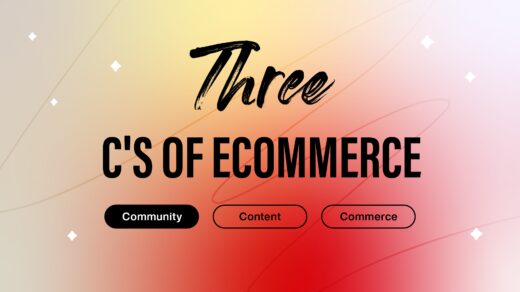How to sell Craft CMS to your team
5 min read

WordPress is the most popular, well-known and common CMS used by businesses worldwide; it’s also one of the worst.
We stopped building websites on WordPress about six years ago and moved to Craft CMS and Commerce, and we’ve never looked back. More importantly, we’ve never looked elsewhere or for different technologies either.
The problem with WordPress is that it was made for blogging, and wily designers began to create themes that transitioned WordPress into a platform that businesses could build their websites, whether it was intuitive for their audience or not.
Similar to WordPress, Craft is an open-source CMS, but it’s flexible, user-friendly, and developed for creating custom digital experiences. That alone is one of its biggest strengths and selling points.
What’s wrong with a pre-designed template? Our content fits into it.
Pre-designed templates aren’t one size fits all. Every business’s audience is unique, with its own goals, pain points and needs. Customer experience should be everything and at the forefront of any web owner and brand’s mind. Happy customers mean conversion.
Craft gives teams the flexibility to create experiences specific to a user and the journey they must undertake to make a decision. When it comes to creating personas for website users, every designer worth their salt makes a point of not basing decisions on assumptions, and it’s the same when it comes to user journeys and content—Craft empowers its developers and content managers with the versatility to develop websites from the ground up.
That means that everything can be bespoke and speak to users personally and intuitively; forget pre-designed templates and create experiences.
We’ll need a web developer to do everything if it’s bespoke.
Many businesses face the same problem—they don’t have the requirement for a full-time developer. Still, they do need development resources in order to build out their website, ensure maintenance is undertaken, and troubleshoot issues that arise.
Maintenance and troubleshooting are a given for running a website — that’s what retainers are for — the beauty of Craft is that it can be designed and built based on components. That means that each designed page is built up of components often used across various pages on a website.
That allows content managers to create pages without any need for more development, with large sections of the website being largely cms’able (bar the obvious, such as the footer).
We’ll need to learn how to use a whole other CMS, we don’t have the time.
Having content-managed websites on Magento, Shopify, WordPress and Craft (CMS and Commerce), I can honestly say that Craft is the easiest CMS to use as a backend content manager and the most intuitive. As a Craft Partner, we’ve taken it very seriously— ensuring that content managers can easily navigate Craft's backend with intelligent relationships and user-friendly management.
It’s easy to learn and simple to use, and as part of every Craft project we undertake, we always bake in Craft training so our clients are educated on using their new CMS.
With a straightforward and manageable CMS, you’ll save more time in the long run than the headache that other popular platforms cause.
WordPress has so many plugins, they won’t have what we need.
Plugins shouldn’t be a selling point. Sure, they’re convenient, and they provide opportunities to bolt on more functionality. However, more plugins pose greater risks: security breaches, bad optimisation, slow page load speeds, and more frequent updates. It’s less about what more we can add to a website and more about what the user needs.
Craft has plenty of plugins, despite what other CMS platforms would lead you to believe; it has an entire store dedicated to them. We have our favourites for the CMS and for the Commerce side of things, and we take great care in ensuring the plugins we use have dedicated developers who keep their plugins up to date and secure.
Building a bespoke website sounds expensive. We’ve had a quote for Shopify and it’s half the price.
We hear you—it’s a big step to build a new website, and they’re not cheap. The investment is important to look at when it comes to a website, especially now. The market has accelerated online over the last two years for obvious reasons, and customer expectations have increased exponentially, too.
These days, you get what you pay for: expertise, quality of output, confidence in your decision, and a supportive extension of your team that has the best interests of your business at heart. That’s not suggesting that a low cost means bad quality, but it often doesn’t compare to the added value that comes with the process of designing and building a tailor-made website for your business, brand, user and team.
It’s about scalability and futureproofing one of your biggest assets. We’ve seen it so many times. The low-cost option seems the most viable, but in the long run, it’s the higher-priced option when improvements aren’t reflective of the cost. In the end, most businesses end up redesigning and developing their website all over again.
In conclusion
There’s so much that Craft is capable of doing, and it’s scalable, which offers flexibility as a business grows. It’s no secret we’re big advocates of Craft, but we’ve got years of experience with multiple different CMS and ecommerce platforms.
We’ve had plenty of problems, headaches and inconveniences from most of them to know that Craft is our future in web development and ensuring our clients have the best experience and platform to run their business online.
If you’re interested in knowing more about Craft, would like a demo or have a Craft website you’re not currently getting along with, get in touch, and we’d be happy to discuss how we can help.
Craft Commerce vs Shopify
8.5 min read

Ecommerce loyalty programs: how you can use loyalty to build community
6 min read

